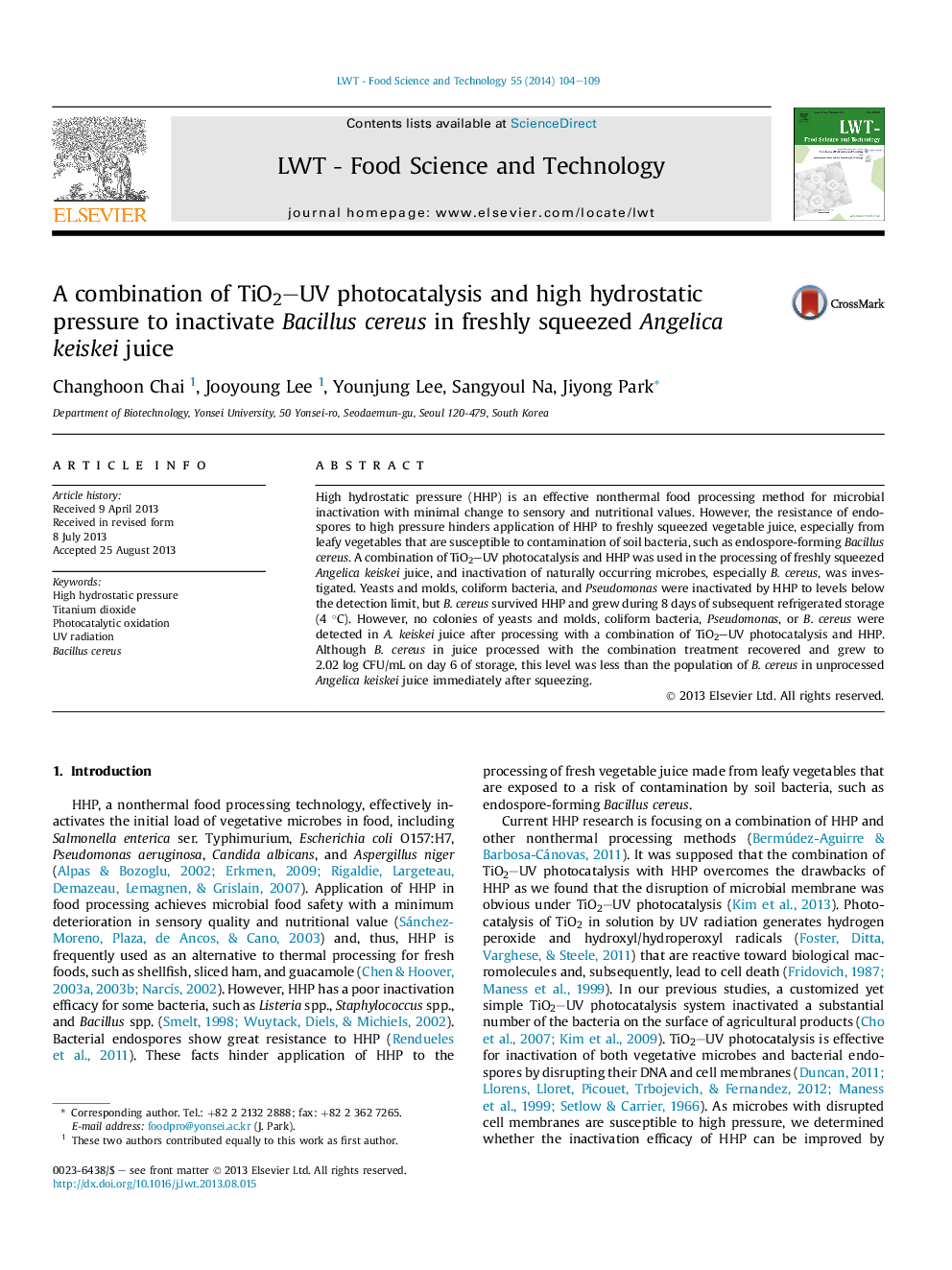| کد مقاله | کد نشریه | سال انتشار | مقاله انگلیسی | نسخه تمام متن |
|---|---|---|---|---|
| 6403873 | 1330898 | 2014 | 6 صفحه PDF | دانلود رایگان |

• HHP has a poor inactivation efficacy for Bacillus cereus.
• A TiO2–UV photocatalysis system was customized and combined with HHP.
• No B. cereus was detected in Angelica keiskei juice after combination processing.
High hydrostatic pressure (HHP) is an effective nonthermal food processing method for microbial inactivation with minimal change to sensory and nutritional values. However, the resistance of endospores to high pressure hinders application of HHP to freshly squeezed vegetable juice, especially from leafy vegetables that are susceptible to contamination of soil bacteria, such as endospore-forming Bacillus cereus. A combination of TiO2–UV photocatalysis and HHP was used in the processing of freshly squeezed Angelica keiskei juice, and inactivation of naturally occurring microbes, especially B. cereus, was investigated. Yeasts and molds, coliform bacteria, and Pseudomonas were inactivated by HHP to levels below the detection limit, but B. cereus survived HHP and grew during 8 days of subsequent refrigerated storage (4 °C). However, no colonies of yeasts and molds, coliform bacteria, Pseudomonas, or B. cereus were detected in A. keiskei juice after processing with a combination of TiO2–UV photocatalysis and HHP. Although B. cereus in juice processed with the combination treatment recovered and grew to 2.02 log CFU/mL on day 6 of storage, this level was less than the population of B. cereus in unprocessed Angelica keiskei juice immediately after squeezing.
Journal: LWT - Food Science and Technology - Volume 55, Issue 1, January 2014, Pages 104–109